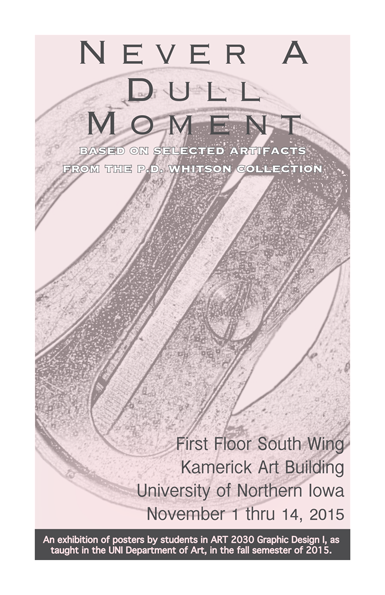 |
| Exhibiti0n poster © Joseph Burgus 2015 |
Above
Poster by graphic designer Joseph Burgus for an exhibition of student posters about
historic pencil sharpeners from the P.D. Whitson Collection. Department
of Art, University of Northern Iowa.
•••
George A. Wolf, Jr., quoted
in Robert Bruce Williams, ed., John Dewey, Recollections (Washington DC:
University Press of America, 1970), pp. 172-173—
[In 1947 or 1948, George A.
Wolf, Jr. was a young physician in New York. One weekend he was asked to take
the emergency calls of one of his professors, who was John Dewey’s doctor. The
American philosopher, who was in his late eighties] had gone for a walk on
Fifth Avenue, slipped and hurt his shoulder. I was called to see him which I
did in his apartment. The old gentleman was literally quivering in pain and his
new wife was most apprehensive…I am an internalist but I remembered from
medical school orthopedics a maneuver, somewhat old fashioned, said to reduce
such dislocations occasionally.
The patient was in so much
pain that I decided to try the maneuver. It consisted of taking off my shoe,
sitting on the foot of Dr. Dewey’s bed, placing my sock covered foot in Dr.
Dewey’s armpit, grasping his hand and forearm on the affected side and gently
pulling…Suddenly, there was a feeling that the bone had slipped back into
place. My memory tells me that it was a loud satisfying crack but my biological
training tells me that both Dr. Dewey and I were so relieved, he of his pain
and I of my apprehension, that the event was really very quiet. He stopped
shaking, looked at me gratefully, and smiled a little smile. He said the
appropriate thank you’s, as did his wife.
The amusing part was that as I
put my foot in the suffering gentleman’s armpit (axilla), I said, “Pardon me,
Dr. Dewey.”






































